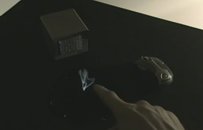Swave Photonics Secures €10M Seed Funding Round to Develop Holographic Augmented Reality
Swave Photonics, the forerunner in the implementation of true holography for augmented reality, today announced the successful closure of its seed round expansion. This additional investment of €3M catapults Swave's total funds raised to €10M.
Reinvestment from present investors imec.xpand, a venture capital fund centered around nanotechnology innovation, Flanders Future Techfund (FFTF), a Belgian/Flemish public investment fund, and QBIC, a Belgian inter-university venture capital fund, underscores investor trust in Swave's technology. Joining these investors are new US-based investors Acequia Capital, a leading venture investment firm based in Seattle, WA, and Luminate NY, the world's only optics, photonics, and imaging accelerator, which is based in Rochester, NY. Their participation, even amidst a challenging fundraising landscape, amplifies the significance and potential of Swave's groundbreaking holographic and photonics solutions. This seed round positions Swave well to execute on its augmented reality roadmap and engage future customers, partners and investors interested in driving true holography for spatial computing.
Reinvestment from present investors imec.xpand, a venture capital fund centered around nanotechnology innovation, Flanders Future Techfund (FFTF), a Belgian/Flemish public investment fund, and QBIC, a Belgian inter-university venture capital fund, underscores investor trust in Swave's technology. Joining these investors are new US-based investors Acequia Capital, a leading venture investment firm based in Seattle, WA, and Luminate NY, the world's only optics, photonics, and imaging accelerator, which is based in Rochester, NY. Their participation, even amidst a challenging fundraising landscape, amplifies the significance and potential of Swave's groundbreaking holographic and photonics solutions. This seed round positions Swave well to execute on its augmented reality roadmap and engage future customers, partners and investors interested in driving true holography for spatial computing.





